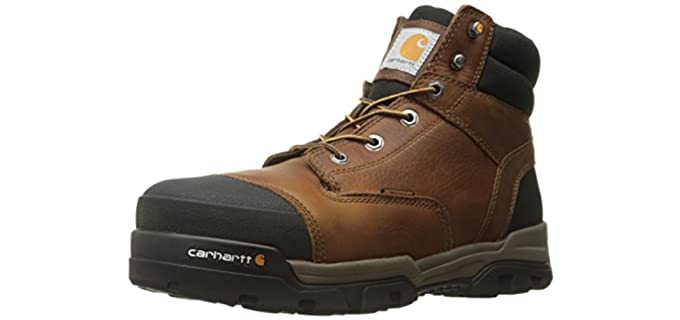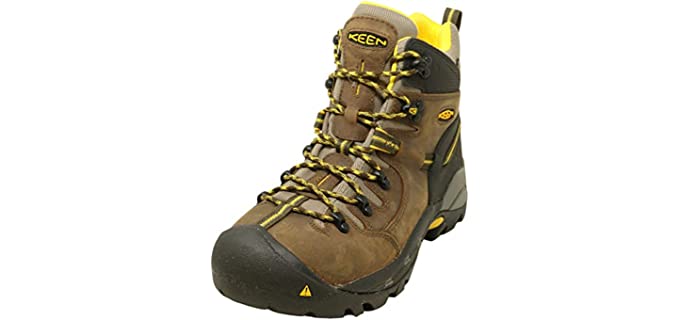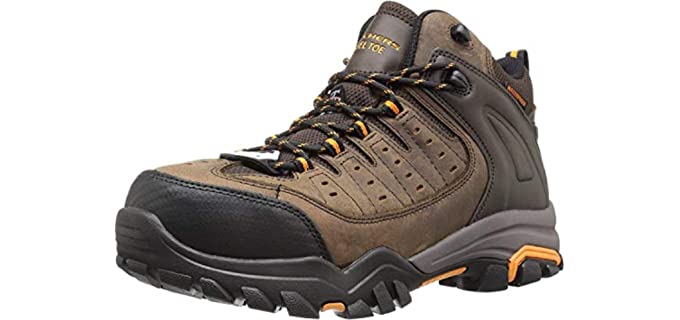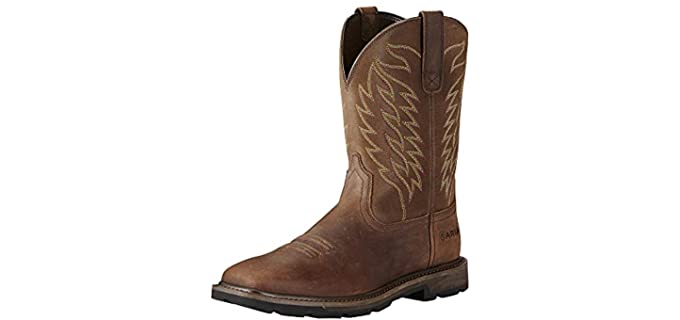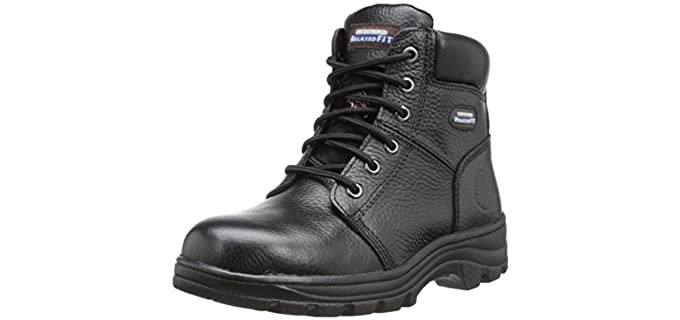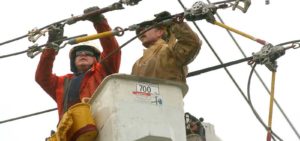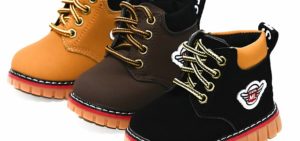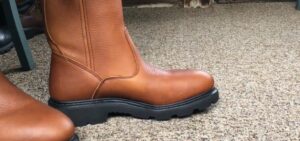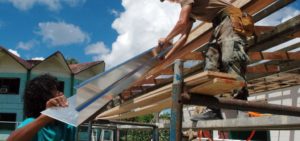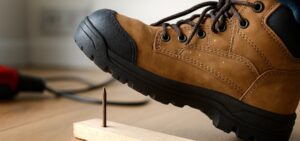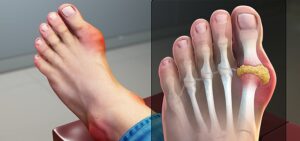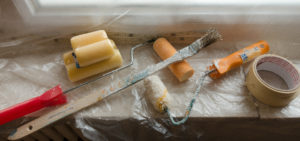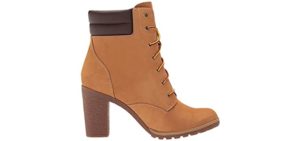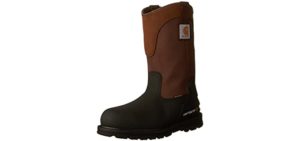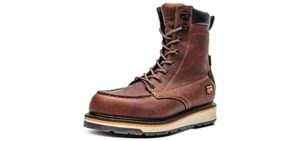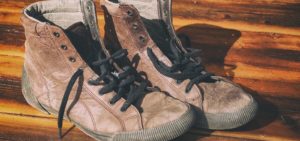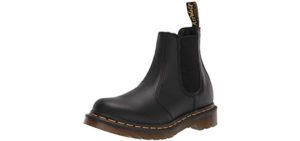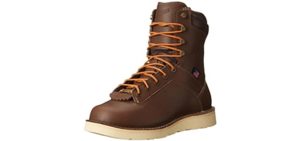Imagine a condition that gradually changes the shape of your toes, making them point upward instead of lying flat. This is what hammertoes, a progressive foot condition, does. It affects the appearance of your feet and makes wearing shoes, especially work boots, a painful experience, potentially impacting your work performance.
Given that most work boots are not designed with comfort in mind, finding the best work boots for Hammertoes is not just a preference, but a necessity. These boots should not only accommodate the condition but also provide comfort and the necessary safety features for your work environment, directly impacting your work performance.
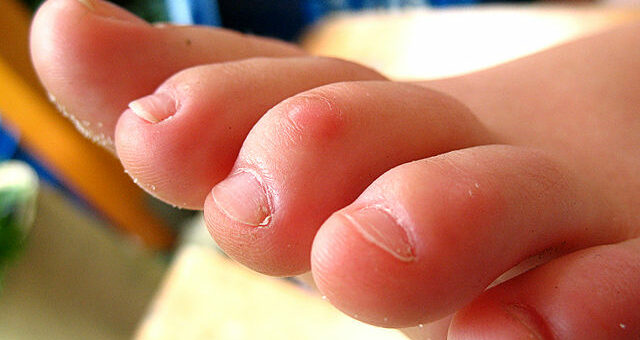
Table of Contents
- Hammertoes Explained
- Work Boots for Hammertoes
- Features of a Good Work Boot for Hammertoes
- Reviews: The Best Work Boots for Hammertoes
- Carhartt® Men's Energy hammertoes Work Boot
- Keen® Men's Pittsburg Work Boot for hammertoes
- Skechers® Men's delleker Work Boot for hammertoes
- Ariat® Men's Groundbreaker Square Toe Work Boot for hammertoes
- Wolverine® Men's Overpass Work Boot for Hammertoes
- Skechers® Men's Workshire Peril Steel Toe Work Boot for Hammertoes
- Index Table: Top Rated Work Boots for Hammertoes
Hammertoes Explained
Before we get into the best workbooks for Hammertoes, let’s first look at exactly what are Hammertoes.
Hammertoes is the term for a progressive symptom and joint change that can involve one, many, or all of your toes. When you have Hammertoes, the joints in your toes point upward instead of lying down flat. This can happen because the muscles in your feet or legs weaken, and the toes pull abnormally because the tendons weaken. Many individuals also have corns and calluses on the top of these deformed toes, which can become painful, especially when wearing shoes that cause friction.
Did you know that each of your feet has 28 bones? Of the five toes, your fist or big toe has two joints. The other toes all have three joints. You have a joint at the base of your toe in the middle of your toe and then at the tip of your toe, close to where your toenail starts.
It’s important to note that hammertoes, Claw Toes, and Mallet Toes are distinct conditions. Hammertoes cause a turn in the middle toe joints, while Claw Toes cause a bend in the first toe and second joints. On the other hand, Mallet Toes causes a bend in the third top joints. Understanding these differences can help you identify your specific foot condition.
- Causes – So what basically causes Hammertoes. Firstly, there could be an abnormal muscle balance in your toes, which can lead to increased pressure on the tendons and the joints, which can cause this deformity in the toe joints. You may be born with a muscle imbalance, or other issues can cause it. For the most part, wearing narrow and ill-fitting shears, especially high-heeled shoes that offer little to no arch support or cushioning, places severe pressure on your toes and joints. And that is why most cases of Hammertoes are found in women rather than men. Setting near masculine disease and individuals with diabetes or are more at risk of developing Hammertoes.
- Symptoms – You may notice a few symptoms when developing Hammertoes. You may feel that a joint in one or more of your toes is becoming rigid, and there may be pain, especially at the top of this bent toe; you may feel pain in the ball of your foot. There may also be redness, inflammation, a burning sensation, and restricted or painful motion in the joints of your toe or toes. Furthermore, because of the abnormal formation of your toes, they can rub against your shoes or press against them, which can cause corns and calluses.
- Types of Hammertoes – You basically get three types of Hammertoes . You get flexible Hammertoes where the condition develops, so your affected toes can still move at the joints. Then you get semi-rigid Hammertoes, where your toe joints start to stiffen. Lastly, you have rigid Hamptons, which means you can no longer move your toes or the joints in your toes because the tendons and the soft tissues have become completely tightened.
- Risk Factors – One of the main causes of Hammertoes is wearing high heels and narrow-fitting shoes. Your age can place you at a larger risk of developing Hammertoes; women are also more likely to develop the condition. Individuals with a second toe longer than the big toe are at high risk of developing Hammertoes and Mallet Toes. Furthermore, certain conditions, such as arthritis and diabetes, can make you more prone to developing certain foot deformities, such as Hammertoes.
- Treatment and Prevention – First of all, when Hammertoes first starts, and you start feeling the first symptoms, I would advise that you start to wear more comfortable and looser fitting footwear with a wider toe box. You can use shoes with orthotic inserts and insoles. Your doctor may also prescribe exercises such as picking up marbles or crumpling a towel with your toes to help stretch and strengthen the muscles and attendance in your toes. In more severe cases, you may need surgery to release the tendon, preventing your toes from lying flat.
Work Boots for Hammertoes
When choosing work boots for Hammertoes, it’s important to consider safety and comfort. We will specifically look at industrial work boots that offer durability and safety while providing a better fit and more comfortable features. This information will help you decide on the best work boots for your condition.
When selecting work boots for Hammertoes, a crucial comfort feature to look for is a wide and roomy forefoot area and toe box. This design element can significantly reduce discomfort and is a key consideration when choosing work boots for this condition.
We want to avoid heeled work boots, so Western-style work boots are unacceptable. We also want to avoid work boots with a narrower fit. We will look at work boots with a supportive and cushioned footbed to help reduce pain.
Features of a Good Work Boot for Hammertoes
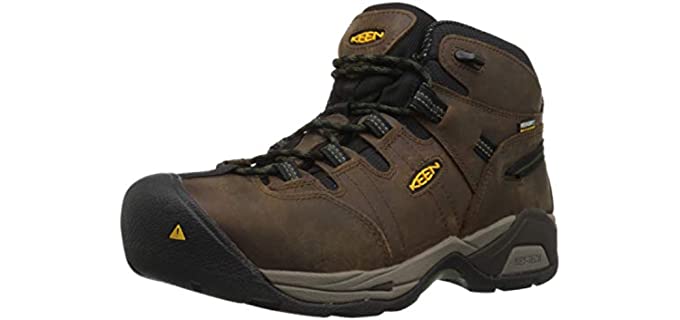
- Uppers – Most work boots will have leather uppers, which may be lined and have a comfortable padded collar. The work boots we will look at will have a much wider, roomier round-toe box.
- Comfort and Support – For full comfort, you can look at work boots with a cushioned sole and a smooth lining to Wick away moisture. A more supportive footbed or midsole that provides good shock absorbency and supports the arch of your foot is ideal.
- Outsole – As a safety standard, the outsole of your Word boots should be a slip-resistant, durable rubber.
- Safety Features – Work boots’ safety features can include either a steel composite or alloy toe for protection. The work boots may be electrical hazard safe. They should also have a slip-resistant outside, which can be slip-resistant or slip and well-resistant. Some work boots are also fully waterproof.
Reviews: The Best Work Boots for Hammertoes
In our review section, you will find some of the most comfortable workbooks for the condition Hammertoes;
1
- The Carhartt Energy is comfortable and ideal if you have Hammertoes.
- The toe box is wide and roomy with a moisture-wicking lining.
- It is leather with a toe bumper and is electrical hazard safe.
- The work boot is waterproof and durable.
- It has a chemical, abrasion-resistant, and slip-resistant rubber outsole.
2
- The Keen Utility Pittsburg is a steel-toe work boot for Hammertoes.
- It has a roomy toe box and is available in wider widths.
- The work boot is leather with a lug slip-resistant rubber outsole.
- It is comfortable and cushioned with a moisture-wicking lining.
3
- The Skechers Delleker has soft uppers and a roomy toe box.
- It is available in wide widths and extended sizes for Hammertoes.
- There is a rubber outsole and air-cooled memory foam insole for comfort.
- The work boots are waterproof and have a steel protective toe.
4
- The Wide square toe on the Groundbreaker is perfect for hammertoes.
- It is a leather work boot that has a 90-degree supportive heel.
- The rubber outsole is durable and slip-resistant.
- There are four layers of supportive and comfortable cushioning in the footbed.
5
- The Overpass is available in wide and extra wide widths for hammertoes.
- It has a protective toe bumper and breathable leather and textile uppers.
- It has a flexible construction and removable OrthoLite cushioned insole.
- The toe is a lightweight composite.
- The outsole is water, oil, slip, abrasion, and chemical resistant.
6
- The Skechers Worskhire Peril is a comfortable fit for hammertoes.
- It is a durable leather work boot with a relaxed fit for ladies.
- The work boot has an oil and slip-resistant outsole, and lug traction.
- Inside is a gel-infused memory foam cushioned footbed.
- It also has a steel toe and is electrical hazard safe.
Index Table: Top Rated Work Boots for Hammertoes
| No. | Product | Image | Features | Brand | Score |
|---|---|---|---|---|---|
| 1 | Carhartt Men's Energy - hammertoes Work Boot |
| Carhartt | 98 | |
| 2 | Keen Men's Pittsburg - Work Boot for hammertoes |
| Keen | 97.9 | |
| 3 | Skechers Men's delleker - Work Boot for hammertoes |
| Skechers | 98 | |
| 4 | Ariat Men's Groundbreaker - Square Toe Work Boot for hammertoes |
| Ariat | 97 | |
| 5 | Wolverine Men's Overpass - Work Boot for Hammertoes |
| Wolverine | 97.8 | |
| 6 | Skechers Men's Workshire Peril - Steel Toe Work Boot for Hammertoes |
| Skechers | 96.9 |
